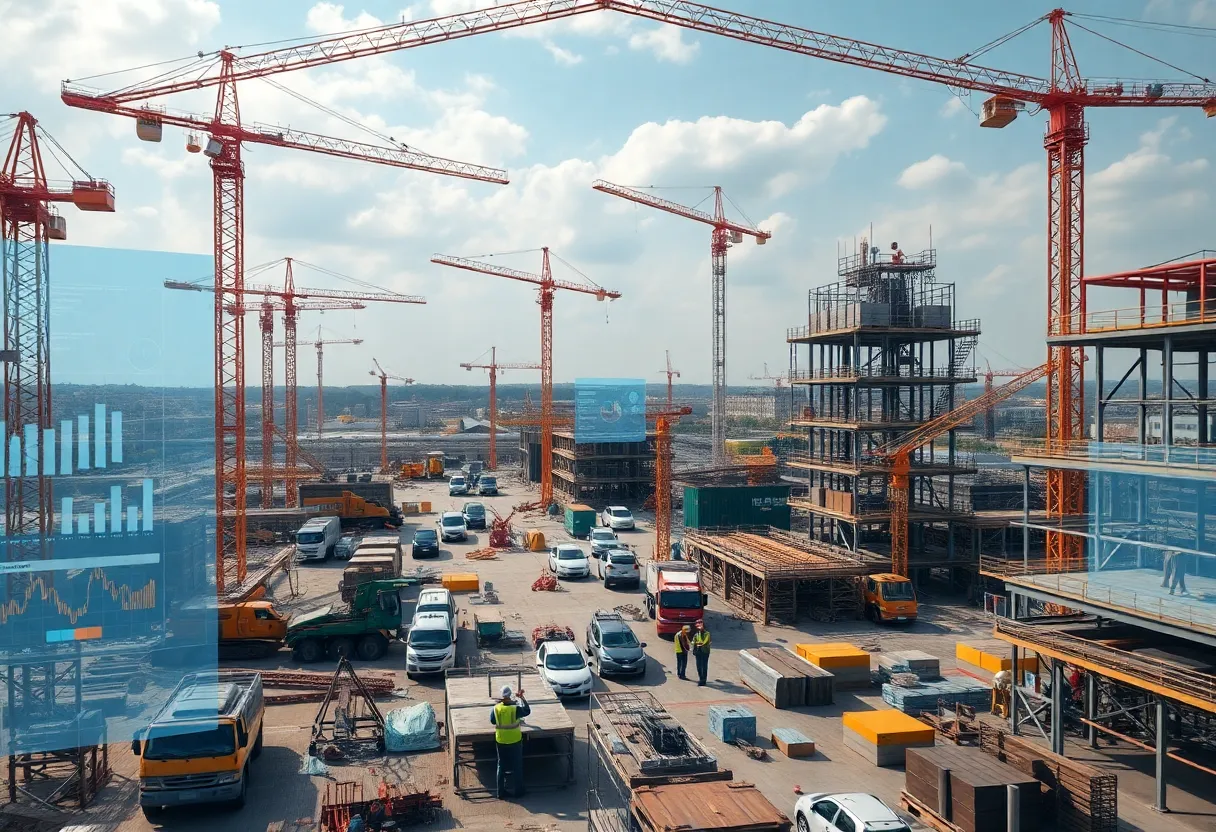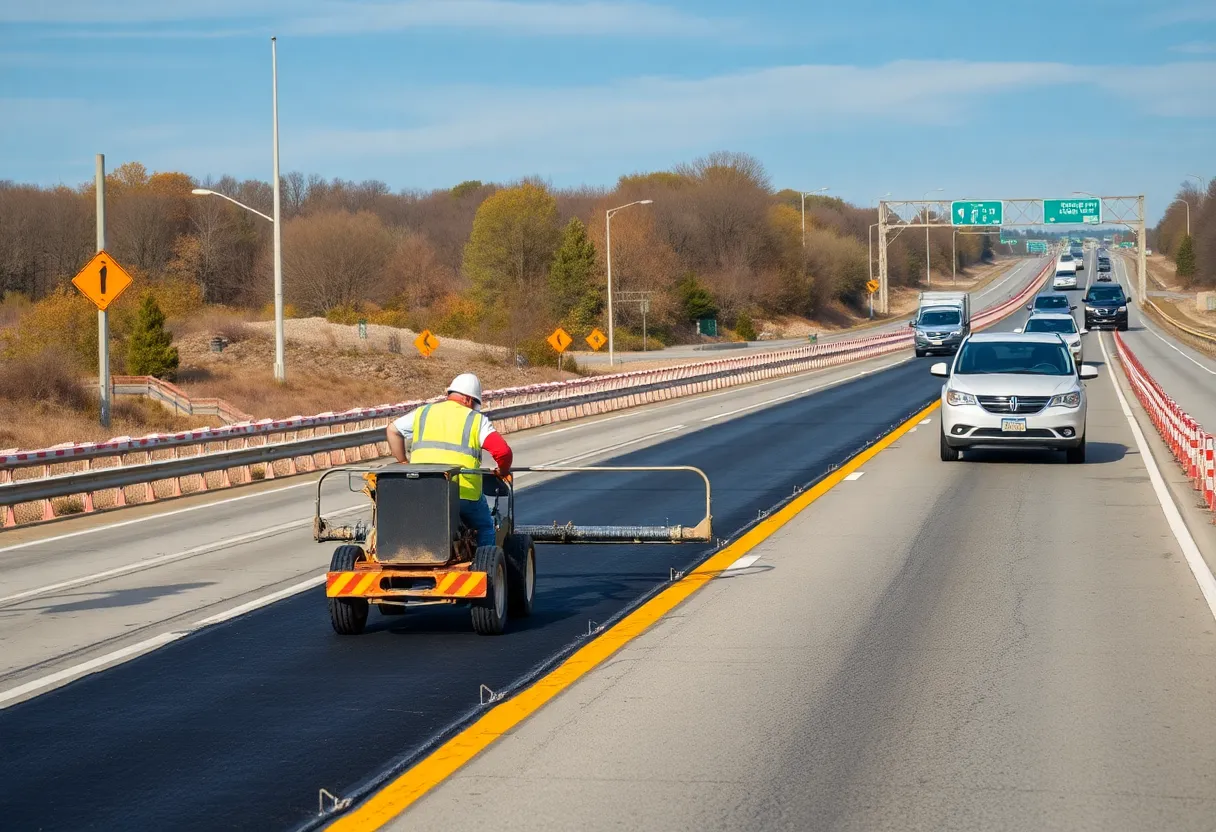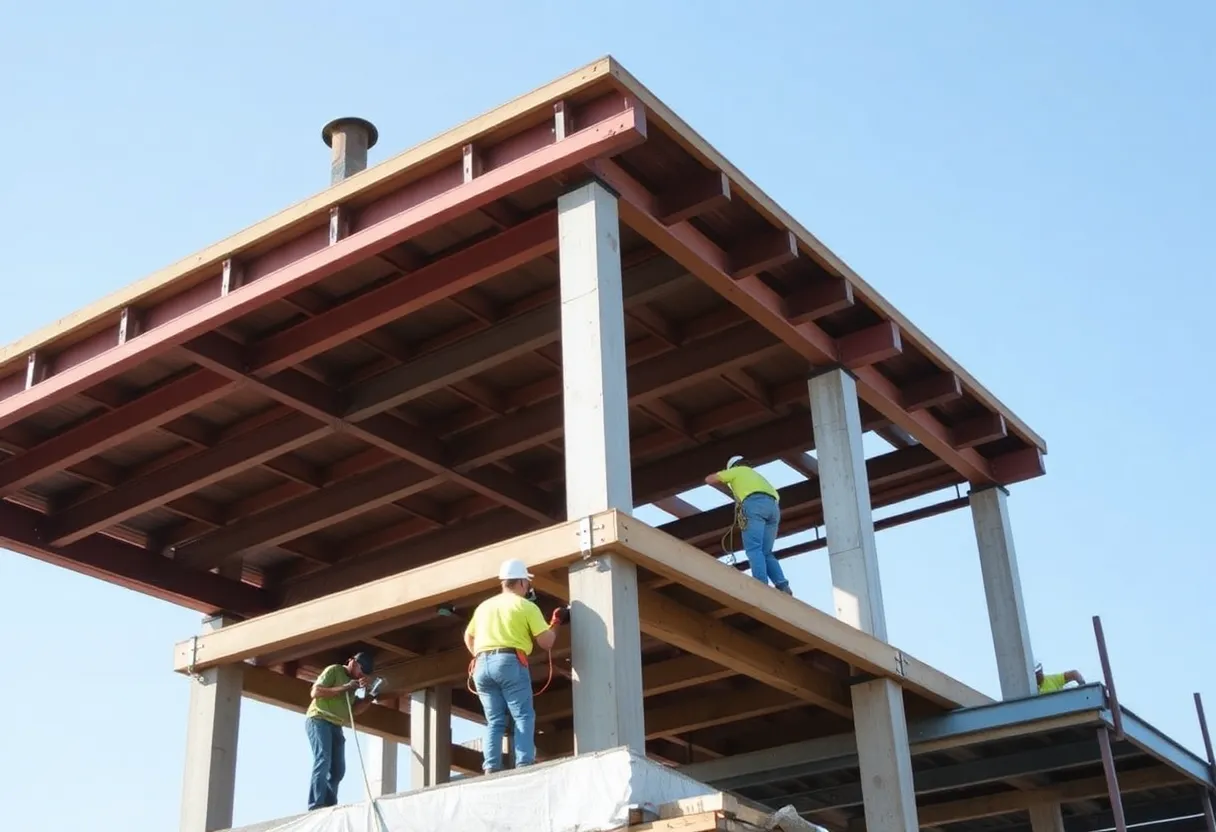Las Vegas, October 9, 2025
News Summary
At the Oracle Edge Customer Summit in Las Vegas, a senior Oracle executive framed AI as a practical tool to help construction manage rapid global expansion, address widening workforce gaps and unlock trapped project data. AI-powered predictive analytics, BIM integration, drones and robotic systems are being applied across preconstruction, construction and operations to improve cost control, safety, quality and sustainability. With job vacancies rising and workers spending significant time searching for information, firms are urged to pilot AI solutions and train teams to capture efficiency gains, reduce waste and support long-term maintenance strategies.
AI strides into construction as industry faces massive growth and skills shortfalls
Josh Kanner spoke about AI in construction at the Oracle Edge Customer Summit in Las Vegas. The presentation framed artificial intelligence as a key tool to help the sector manage rapid expansion, close widening workforce gaps and unlock trapped information across projects.
Top lines
The construction industry is described as booming and is projected to grow by $4.2 trillion globally over the next 15 years, according to Global Construction Futures. That expansion arrives at a moment when job vacancies in construction are reported as up 41% year-over-year and a wave of retirements in the construction workforce is described as looming. Against that backdrop, AI is being positioned as a practical set of tools that can improve design, construction and long-term operations.
Why AI matters now
Industry pressures are pushing AI adoption. Cost control remains a primary motivator, and AI is presented as able to identify potential cost overruns early and optimize resource allocation throughout the project lifecycle. A cited study estimates AI-powered predictive analytics can reduce project costs by up to 15%. At the same time, companies are working to break down data silos to increase cross-team collaboration and the democratization of AI tools is making implementation more accessible.
Data frictions and productivity drag
Data fragmentation is a persistent problem. A 2024 study found construction workers spend 18% of their time searching for information. The same study found 43% of workers believe better data access would improve decision-making. AI can help bridge those gaps by converting raw data into actionable insights, analyzing schedules, predicting risks, and optimizing resources to enable a more efficient and attractive work environment.
Across the project lifecycle
AI’s influence is expanding across the entire construction lifecycle. In preconstruction, AI is proving invaluable for feasibility studies, material optimization, and precise cost estimations. During construction, AI can provide real-time progress tracking, predictive analytics for proactive issue prevention, and insightful Building Information Modeling (BIM) analysis. After project completion, AI capabilities such as predictive maintenance schedules and energy monitoring systems can continue to deliver value, optimizing operational efficiency, reducing costs, and improving sustainability.
Safety, quality and sustainability
Safety is a top priority in construction and can be improved through AI’s ability to predict potential risks, monitor equipment performance for early signs of failure, and proactively detect hazards on the jobsite. Improved safety from AI can translate to fewer accidents and a safer work environment. AI can also elevate quality control through meticulous design analysis, AI-powered inspections and increasing use of robotic precision. And because the construction industry accounts for over 20% of global carbon emissions, AI-driven material optimization and energy auditing are positioned as tools to reduce waste and promote more sustainable methods.
Where the field is headed
The transition from standalone point solutions to intelligent platforms that synchronize activities and empower teams with predictive capabilities marks an industry inflection point. The future of AI in construction will hinge on three critical factors: Connection — breaking down data silos to create a unified view of projects and portfolios; Intelligence — leveraging historical and real-time data to power predictive analytics; and Orchestration — synchronizing activities so all parties work together according to central project goals with real-time visibility into changes. Growth will be further driven by increasing integration of AI with BIM and robotics.
Practical steps for contractors
The recommended path for firms is to invest in AI training for their workforce and pilot AI-powered solutions on key projects. The transition from hypothetical to practical is already underway, with pioneering projects demonstrating real benefits. Real-world examples cited include the Burj Khalifa, which employs an AI-powered maintenance system to monitor critical machinery and detect early signs of potential failure to enable proactive maintenance and minimize downtime.
About the speaker and context
Josh Kanner is senior director of product and strategy at Oracle Construction and Engineering. He previously was founder and CEO of Newmetrix before its acquisition by Oracle, and co-founded and was CEO of Vela Systems before it was acquired by Autodesk. The content containing Josh Kanner’s remarks appears as Sponsored Content (a paid section). Sponsored Content is described as a special paid section where industry companies provide high-quality, objective, non-commercial content around topics of interest to the ENR audience. All Sponsored Content is supplied by the advertising company and any opinions expressed are those of the author and do not necessarily reflect the views of ENR or its parent company, BNP Media. Interested parties are invited to contact their local rep to participate in the Sponsored Content section.
Additional page items and local context
The page includes an ilayer/embed with src=”https://industry-jobs.enr.com/api/regionalcareercenter/?&searchregion=all&jobpostings=3&layout=4″, width=”300″, height=”300″, scrolling=”no”. Coinciding local items note that Clark County officials and the Oakland Athletics franchise took another step toward the team’s relocation to Las Vegas, and the development agreement covers construction responsibilities, environmental and public infrastructure, and maintenance. Construction on the Strip stadium has been underway since the June groundbreaking ceremony and officials said the stadium will be ready to welcome fans in time for the 2028 Major League Baseball season.
Separate labor market reporting shows construction jobs in Nevada were down 6.4% (7,100 jobs) year over year through August, according to a report from The Associated General Contractors of America (AGC). Nevada ranked fifth in the country for overall construction jobs lost in that period. The Las Vegas Valley reportedly shed 4,300 jobs from July to August, according to the Nevada Department of Employment, Training and Rehabilitation (DETR).
Bottom line
With growth forecasts and hiring challenges colliding, AI is being presented as a set of practical tools to help the industry manage costs, reduce waste, improve safety and make data-driven decisions. Firms that pilot AI tools now and train their teams are positioned to capture the operational and sustainability benefits described in this coverage.
FAQ
Where did Josh Kanner speak?
Josh Kanner spoke about AI in construction at the Oracle Edge Customer Summit in Las Vegas.
What is Josh Kanner’s role?
Josh Kanner is senior director of product and strategy at Oracle Construction and Engineering.
How large is the projected industry growth?
The construction industry is described as booming and is projected to grow by $4.2 trillion globally over the next 15 years, according to Global Construction Futures.
What is the current job vacancy trend in construction?
Job vacancies in construction are reported as up 41% year-over-year.
How much time do workers spend searching for information?
A 2024 study found construction workers spend 18% of their time searching for information.
How is the content presented on the page?
The content containing Josh Kanner’s remarks appears as Sponsored Content (a paid section).
Does the page include an embedded job widget?
The page includes an ilayer/embed with src=”https://industry-jobs.enr.com/api/regionalcareercenter/?&searchregion=all&jobpostings=3&layout=4″, width=”300″, height=”300″, scrolling=”no”.
What was the state-level job change reported for Nevada?
Construction jobs in Nevada were down 6.4% (7,100 jobs) year over year through August, according to a report from The Associated General Contractors of America (AGC).
Key features at a glance
| Feature | Detail |
|---|---|
| Speaker and Role | Josh Kanner is senior director of product and strategy at Oracle Construction and Engineering. |
| Event | Josh Kanner spoke about AI in construction at the Oracle Edge Customer Summit in Las Vegas. |
| Global growth projection | The construction industry is described as booming and is projected to grow by $4.2 trillion globally over the next 15 years, according to Global Construction Futures. |
| Job vacancy trend | Job vacancies in construction are reported as up 41% year-over-year. |
| Data friction stat | A 2024 study found construction workers spend 18% of their time searching for information. |
| Potential cost savings | A cited study estimates AI-powered predictive analytics can reduce project costs by up to 15%. |
| Sponsored content note | The content containing Josh Kanner’s remarks appears as Sponsored Content (a paid section). |
| Embedded widget | The page includes an ilayer/embed with src=”https://industry-jobs.enr.com/api/regionalcareercenter/?&searchregion=all&jobpostings=3&layout=4″, width=”300″, height=”300″, scrolling=”no”. |
| Nevada jobs change | Construction jobs in Nevada were down 6.4% (7,100 jobs) year over year through August, according to a report from The Associated General Contractors of America (AGC). |
Deeper Dive: News & Info About This Topic
Additional Resources
- Fox5 Las Vegas: Athletics, county officials finalize development agreement — Strip ballpark
- Wikipedia: Oakland Athletics
- Victorville Daily Press: Brightline West Southern California–Las Vegas high-speed rail cost
- Google Search: Brightline West high-speed rail Las Vegas
- Las Vegas Review-Journal: Las Vegas loses thousands of construction jobs, contractors association says
- Google Scholar: Las Vegas construction jobs 2025
- MLB.com: Athletics Las Vegas ballpark construction cam
- Encyclopedia Britannica: Stadium construction
- ENR: Bright lights shine on Las Vegas construction
- Google News: Las Vegas construction 2025
Author: Construction FL News
The FLORIDA STAFF WRITER represents the experienced team at constructionflnews.com, your go-to source for actionable local news and information in Florida and beyond. Specializing in "news you can use," we cover essential topics like product reviews for personal and business needs, local business directories, politics, real estate trends, neighborhood insights, and state news affecting the area—with deep expertise drawn from years of dedicated reporting and strong community input, including local press releases and business updates. We deliver top reporting on high-value events such as the Florida Build Expo, major infrastructure projects, and advancements in construction technology showcases. Our coverage extends to key organizations like the Associated Builders and Contractors of Florida and the Florida Home Builders Association, plus leading businesses in construction and legal services that power the local economy such as CMiC Global and Shutts & Bowen LLP. As part of the broader network, including constructioncanews.com, constructionnynews.com, and constructiontxnews.com, we provide comprehensive, credible insights into the dynamic construction landscape across multiple states.





